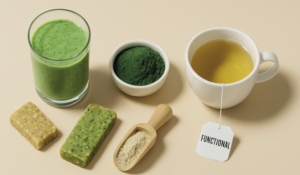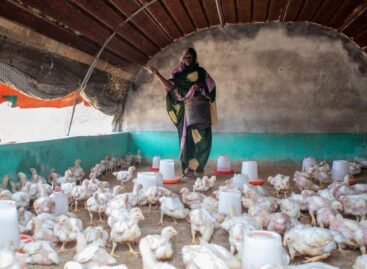The taste, packaging and rhythm of the future – a 2025 innovation map
In this article our magazine takes a look at how the latest market trends and innovations are shaping the rapidly changing FMCG sector in the second half of 2025.
This article is available for reading in Trade magazin 2025/6-7.
The first months of 2025 confirmed the expectations of international analysts: after years of economic uncertainty, the FMCG market is back on a stable growth path.
Meanwhile in Hungary
Hungary’s food industry is developing dynamically in 2025: according to data from Statista, annual revenue in the sector will reach USD 19.52bn and we can expect a 7.16% annual growth in the next five years. Meat is the biggest category, which represents a market value of USD 3.85bn. Total market volume is expected to grow to 5.37 billion kilograms by 2030. Per capita the market will generate USD 2,030 in revenues in 2025, while annual consumption will reach 494.3kg per person. The engine of growth will be processed and health-oriented product categories, while the packaged convenience food segment will also stabilise.

Functionality and delight go hand in hand: spirulina powders, adaptogenic drinks and protein bars are now becoming part of everyday diets for health- and performance-oriented consumers
Product innovation directions
New levels of meat alternatives: the alternative protein market remains one of the most dynamic areas of international innovation – by 2025 we will no longer be talking about meat substitutes, but about technologically advanced products that offer a real meat-like experience. Meanwhile, fermentation technologies are also gaining momentum, for instance meat substitutes made from the Japanese fungus koji (Aspergillus oryzae).
Functional foods: another key area on the FMCG innovation map is the functional foods segment, which is growing dynamically in 2025 – the global market was worth USD 281.3bn in 2024 and is expected to reach USD 315.1bn by 2025. Yogurts and drinks fortified with probiotics, snacks and drinks containing adaptogens, and muesli and baked goods made with antioxidants all contribute to health preservation.

Lab-grown meat represents a new generation of protein sources: an animal-free, sustainable and precisely controllable alternative
Flavour revolution: one of the most striking flavour trends on the FMCG market in 2025 is the spreading of spicy-sweet combinations. Hot honey is no longer used just on pizzas and grilled meats, but also on snacks and cheeses, and its viral success has paved the way for new fusion flavour variations. At the same time, the “swalty” – sweet and salty – trend is also strengthening.
New ingredients: product innovations are increasingly featuring natural ingredients that offer unique flavours plus health and sustainability benefits. Koji is one of the most promising ingredients in fermented meat substitutes: besides its characteristic umami flavour, it also functions as a natural texture enhancer, making it a key ingredient in the new generation of plant-based meat alternatives.
Fighting food waste: losses on the global fruit and vegetable market have brought gene editing into the centre of attention. Thanks to a new development by the British company Tropic, bananas don’t brown for 12 hours after peeling. The aim of biotechnological intervention is not to change the taste or texture, but to preserve freshness and aesthetics.

The digitally-informed shopper has become the new norm: based on the information scanned with their smartphone, they make choices depending on taste, composition and sustainability – awareness is no longer a niche need, but a standard expectation
Technological innovations of the future
Regenerative agriculture: sustainability strategies have entered a new era, as following carbon neutrality goals more and more large companies are now switching to a regenerative approach to agriculture, which aims not only to reduce damage but also to restore natural ecosystems. The transformation of the McDonald’s global supply chain is a good example of this: the company seeks to reduce its agricultural emissions by minimum 16% until 2030.
Smart packaging revolution: one of the most promising packaging developments in 2025 is battery-free, stretchable and sensor-enabled packaging that can detect signs of food spoilage in real time, and when necessary it can release antioxidants to preserve freshness. An international research team developed the new technology, including experts from Italy’s IIT and Germany’s TU Munich.

Az intelligens csomagolás új generációja valós idejű frissességjelzéssel és digitális információkkal támogatja a tudatos vásárlást – egyre több márka építi be a fenntartható innováció részeként
Automation and predictive maintenance in manufacturing: automation and predictive maintenance are increasingly common in manufacturing processes. Systems such as PlanetTogether APS enable manufacturers to optimise production scheduling, reduce downtime and improve delivery accuracy. These technologies not only increase efficiency, but also contribute to more sustainable and flexible manufacturing processes.
AI-based developments and predictive analytics: in the FMCG sector AI and machine learning are already playing an important role in product development and consumer demand forecasting. For instance Akira AI has a multi-agent system that optimises new product development, packaging and market entry strategies based on real-time consumer feedback and trends.
Related news
KPMG CEO Outlook 2025: replanned trust
🎧 Hallgasd a cikket: Lejátszás Szünet Folytatás Leállítás Nyelv: Auto…
Read more >MNB: artificial intelligence could be the new engine of the financial system
🎧 Hallgasd a cikket: Lejátszás Szünet Folytatás Leállítás Nyelv: Auto…
Read more >Publicis Groupe’s annual Goodwill message has arrived
🎧 Hallgasd a cikket: Lejátszás Szünet Folytatás Leállítás Nyelv: Auto…
Read more >Related news
The Hungarian Confederation of Economic Workers also spoke out regarding the inflation data
🎧 Hallgasd a cikket: Lejátszás Szünet Folytatás Leállítás Nyelv: Auto…
Read more >In addition to jelly and marzipan Christmas candy, there are more and more specially flavored Christmas desserts on offer
🎧 Hallgasd a cikket: Lejátszás Szünet Folytatás Leállítás Nyelv: Auto…
Read more >FAO: International food prices have been declining since September
🎧 Hallgasd a cikket: Lejátszás Szünet Folytatás Leállítás Nyelv: Auto…
Read more >






